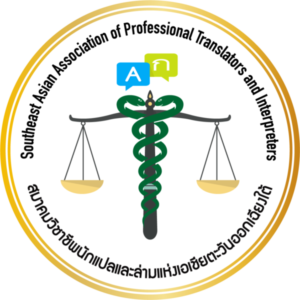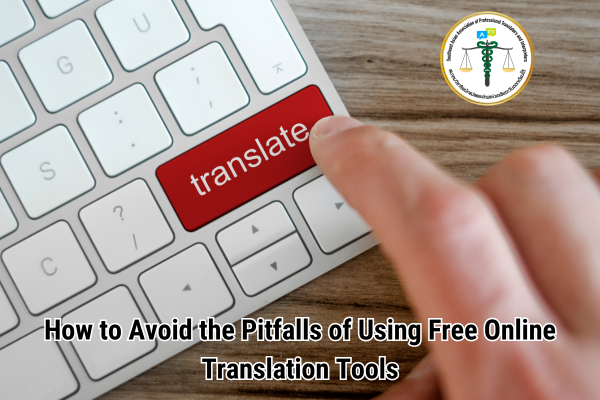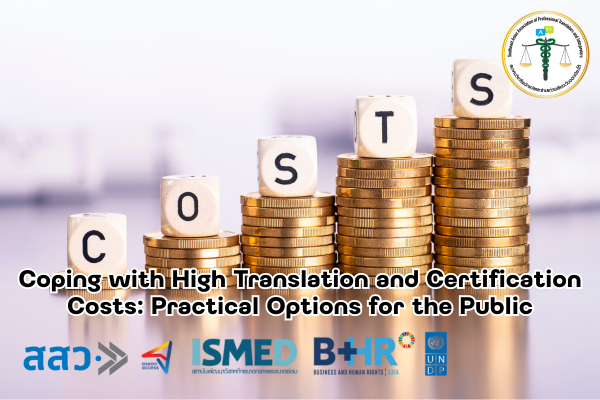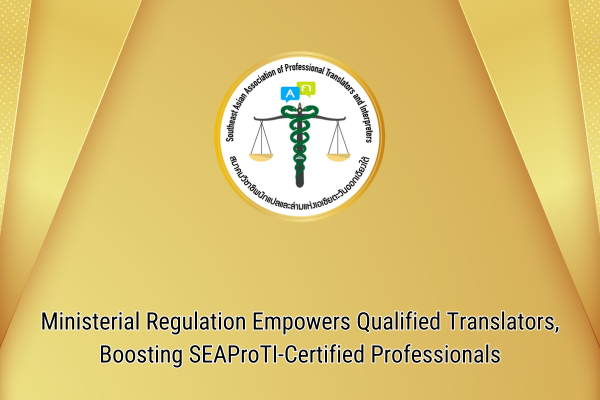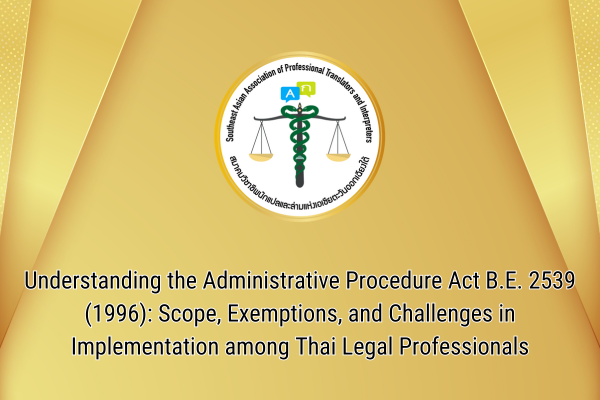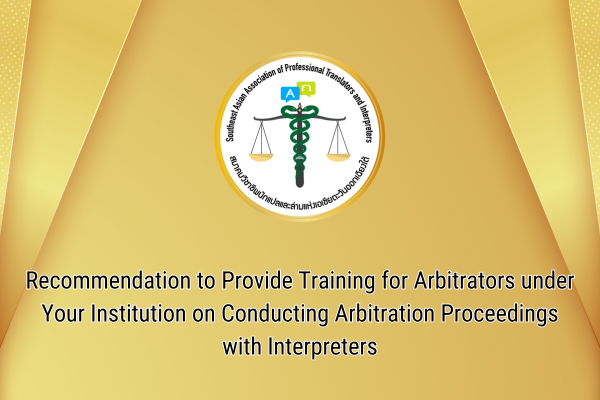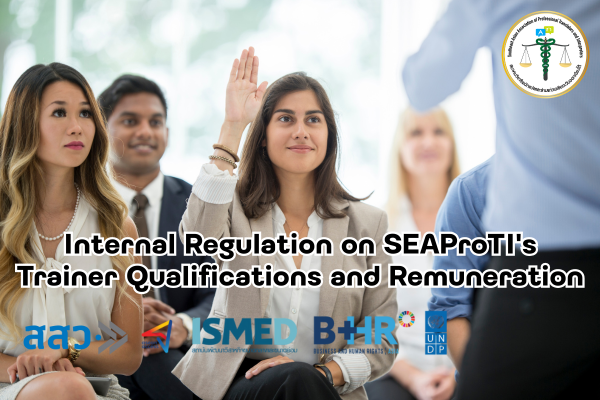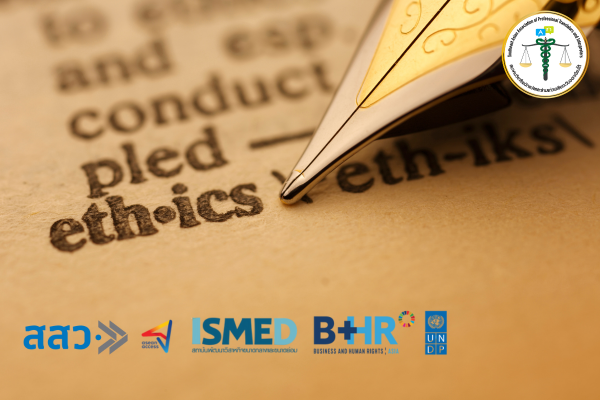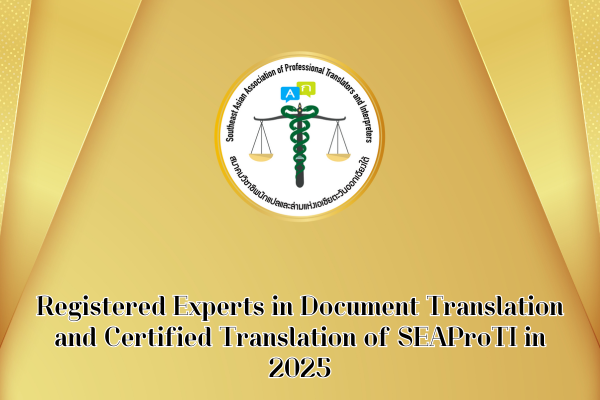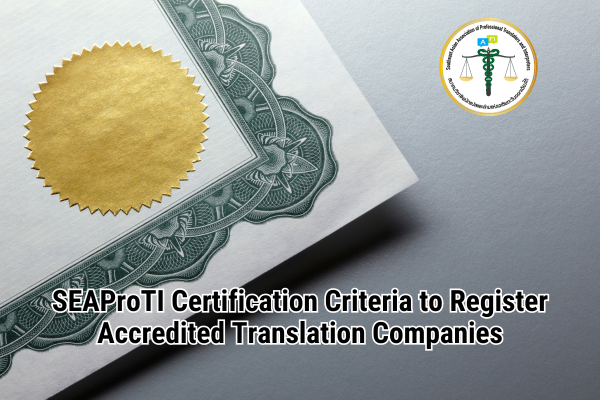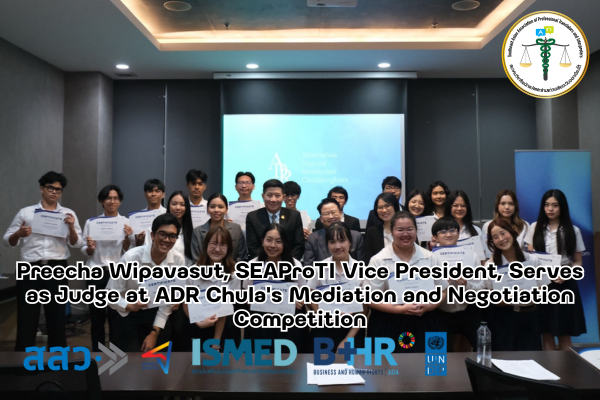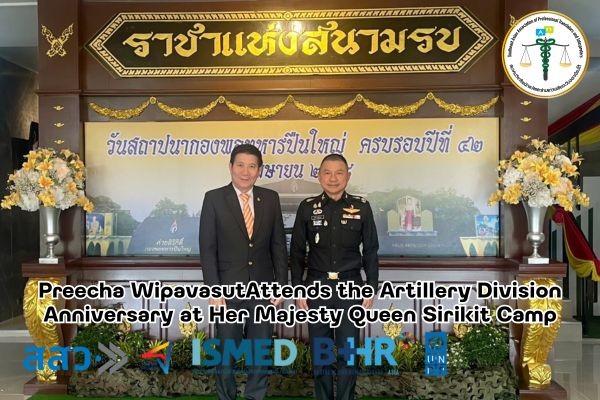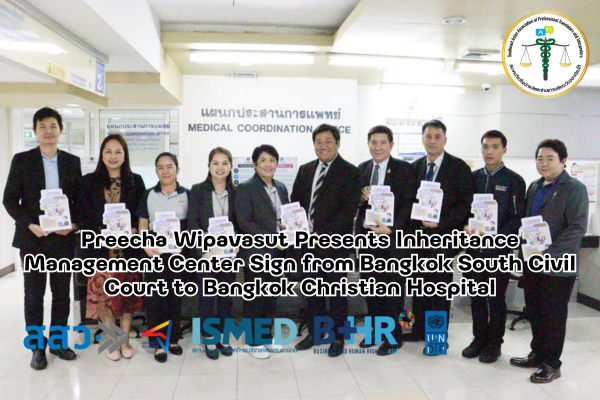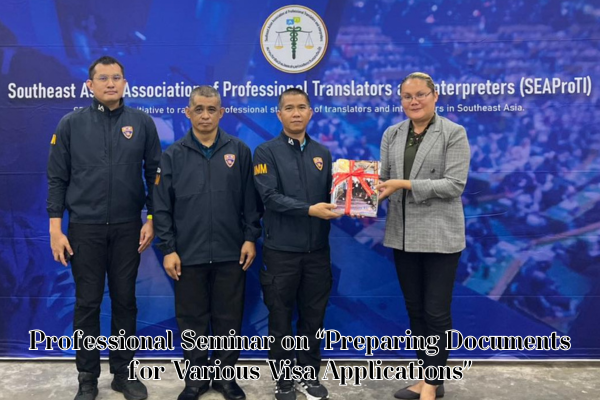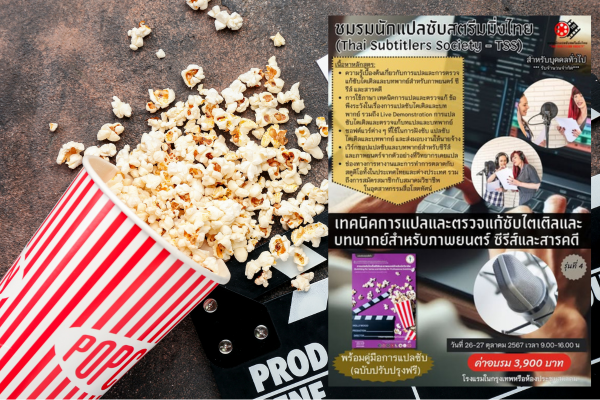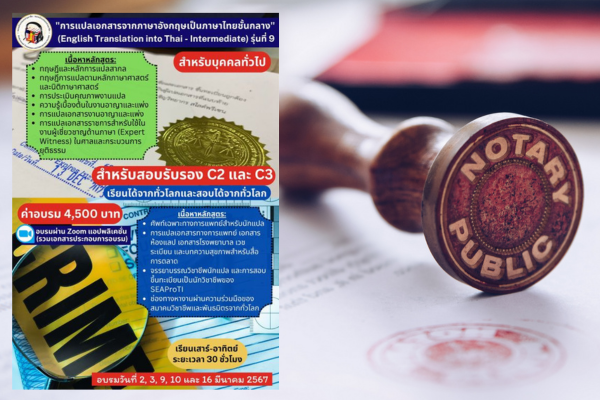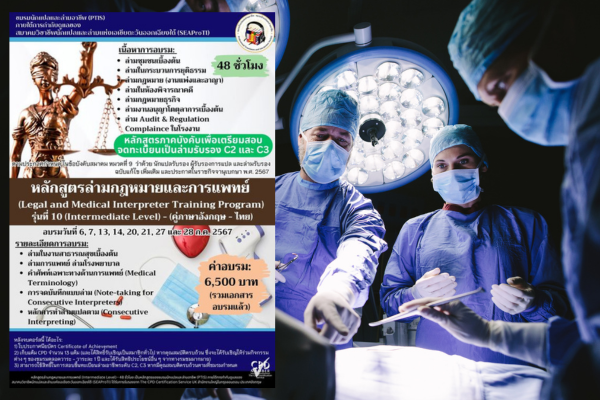When and Why You Should Use Transcription and Translation Together
12 February 2025, Bangkok – In an increasingly connected world, clear communication across languages is essential. Whether in business, media, or legal matters, delivering the right message can make a significant impact. This is why transcription and translation are powerful tools that, when used together, effectively bridge communication gaps.
But when should you use both? And why is this combination so effective? Let’s find out!
What is Transcription?
Before we dive into why transcription and translation work well together, let’s understand both concepts.
Transcription is the process of converting spoken words into written text. It is commonly used for audio or video content, such as interviews, podcasts, or speeches. This text format makes it easier to analyze, share, or repurpose content.
What is Translation?
Translation is the process of converting text from one language into another while maintaining the original meaning and intent.
While transcription creates a text version of spoken words, translation ensures that the text can be understood in multiple languages.
When Should You Use Transcription and Translation Together?
There are many situations where using transcription and translation together is a smart choice. Here are some key examples:
1. International Business Meetings and Conferences
If you’re hosting an event with participants from different countries, chances are they speak different languages. Transcribing and translating speeches or discussions create written records in multiple languages, making the content accessible to everyone.
2. Film, TV, and Online Media Production
For content such as documentaries, movies, or interviews, transcription helps create an accurate script. Translating that script ensures global accessibility through subtitles or dubbing.
3. Legal and Medical Fields
In legal documents or medical consultations, accurate and accessible information is crucial. Transcription captures detailed conversations, while translation ensures that all parties understand the content correctly.
4. Academic and Research Work
For students and researchers working with multilingual data, transcription and translation are invaluable. They enable the study of interviews, focus groups, or recorded lectures in their original language while making findings accessible to a broader audience.
5. Marketing Campaigns
Businesses expanding into global markets often use video content as a key communication tool. Transcribing and translating videos help create subtitles or captions that resonate with local audiences, boosting engagement and brand loyalty.
Why Should You Use Transcription and Translation Together?
Now that we know when to use both services, let’s explore why this combination is so effective.
1. Increased Accuracy
Transcribing before translating provides a clear text base for translation. Translators can focus on meaning preservation, reducing errors or misinterpretations, especially in complex content.
2. Broader Reach
Combining transcription and translation makes it easier to communicate with a global audience. Whether it’s a viral video, corporate training, or a scientific breakthrough, your content can reach more people in their native language.
3. Time and Cost Efficiency
Although transcription may seem like an extra step, it saves time in the long run by streamlining the translation process. A clear transcript speeds up translation, reducing costs and allowing multiple language translations with ease.
4. Improved Accessibility and Inclusivity
Transcription and translation not only help different language speakers understand content but also ensure accessibility for individuals with hearing impairments. This approach promotes inclusivity and enhances audience engagement.
5. Enhanced SEO and Discoverability
For digital content creators, using transcription and translation can boost search engine rankings. Search engines can index transcripts more effectively than audio or video, while translations allow content to appear in searches across multiple languages.
How Does It Work in Practice?
Consider this example:
You are a filmmaker creating a documentary on climate change, featuring scientists from different countries speaking various languages.
Step 1: Transcription
Start by transcribing the audio into text in the original languages, creating a clear and accurate record.
Step 2: Translation
Translate the transcribed text into multiple languages to create subtitles or voiceovers that retain the original meaning.
Step 3: Publishing the Final Product
With both transcription and translation complete, you can release the documentary with subtitles or dubbed audio, ensuring it reaches a global audience.
Conclusion
Transcription and translation are powerful tools on their own, but when combined, they unlock new possibilities for communication and connection. They help break language barriers, improve accuracy, and expand audience reach.
Whether you’re a business professional, media creator, or researcher, using transcription and translation together isn’t just a good choice—it’s a key to international success.
SEAProTI’s certified translators, translation certification providers, and certified interpreters:
The Southeast Asian Association of Professional Translators and Interpreters (SEAProTI) has officially announced the criteria and qualifications for individuals to register as “Certified Translators,” “Translation Certification Providers,” and “Certified Interpreters” under the association’s regulations. These guidelines are detailed in Sections 9 and 10 of the Royal Thai Government Gazette, issued by the Secretariat of the Cabinet under the Office of the Prime Minister of the Kingdom of Thailand, dated July 25, 2024, Volume 141, Part 66 Ng, Page 100.
To read the full publication, visit: the Royal Thai Government Gazette
เมื่อใดและเหตุใดคุณควรใช้การถอดความและการแปลร่วมกัน
12 กุมภาพันธ์ 2568, กรุงเทพมหานคร – ในโลกที่เชื่อมต่อถึงกันมากขึ้น การสื่อสารที่ชัดเจนข้ามภาษากลายเป็นสิ่งสำคัญ ไม่ว่าจะเป็นในภาคธุรกิจ สื่อ หรือกฎหมาย การถ่ายทอดข้อความที่ถูกต้องสามารถสร้างความแตกต่างได้อย่างมาก นี่คือเหตุผลที่การถอดความและการแปลเป็นเครื่องมือที่ทรงพลัง ซึ่งเมื่อนำมาใช้ร่วมกัน จะช่วยลดช่องว่างทางการสื่อสารได้อย่างมีประสิทธิภาพ
แต่เมื่อใดที่ควรใช้ทั้งสองอย่างร่วมกัน และเหตุใดการรวมกันนี้จึงมีประสิทธิภาพ มาหาคำตอบกัน!
การถอดความคืออะไร
ก่อนที่เราจะลงลึกถึงเหตุผลที่การถอดความและการแปลทำงานได้ดีร่วมกัน มาทำความเข้าใจแนวคิดของทั้งสองก่อน
การถอดความ (Transcription) คือกระบวนการแปลงคำพูดให้อยู่ในรูปแบบข้อความ โดยใช้กับเนื้อหาเสียงหรือวิดีโอ เช่น การสัมภาษณ์ พอดแคสต์ หรือสุนทรพจน์ รูปแบบข้อความนี้ทำให้เนื้อหาง่ายต่อการวิเคราะห์ แบ่งปัน หรือใช้ซ้ำ
การแปลคืออะไร
การแปล (Translation) เป็นกระบวนการเปลี่ยนข้อความจากภาษาหนึ่งไปเป็นอีกภาษาหนึ่ง โดยคงความหมายและเจตนาของเนื้อหาต้นฉบับเอาไว้ให้มากที่สุด
ในขณะที่การถอดความช่วยสร้างเวอร์ชันข้อความของคำพูด การแปลทำให้ข้อความนั้นสามารถเข้าใจได้ในหลากหลายภาษา
เมื่อใดที่ควรใช้การถอดความและการแปลร่วมกัน
มีหลายสถานการณ์ที่การใช้การถอดความและการแปลร่วมกันเป็นทางเลือกที่ชาญฉลาด ต่อไปนี้เป็นตัวอย่างที่สำคัญ:
1. การประชุมทางธุรกิจและงานสัมมนาระดับนานาชาติ
หากคุณกำลังจัดงานที่มีผู้เข้าร่วมจากหลายประเทศ มีแนวโน้มว่าผู้เข้าร่วมจะพูดภาษาต่างกัน การถอดความและการแปลสุนทรพจน์หรือการเสวนาช่วยสร้างบันทึกเป็นลายลักษณ์อักษรในหลายภาษา ทำให้ทุกคนสามารถเข้าถึงข้อมูลได้
2. การผลิตสื่อภาพยนตร์ โทรทัศน์ และเนื้อหาออนไลน์
สำหรับเนื้อหาเช่น สารคดี ภาพยนตร์ หรือการสัมภาษณ์ การถอดความช่วยให้สามารถสร้างสคริปต์ที่แม่นยำ จากนั้นนำไปแปลเพื่อให้ผู้ชมทั่วโลกสามารถเข้าถึงเนื้อหาผ่านคำบรรยายหรือการพากย์เสียง
3. งานด้านกฎหมายและการแพทย์
ในกรณีของเอกสารทางกฎหมายหรือการให้คำปรึกษาทางการแพทย์ ข้อมูลที่ถูกต้องและเข้าถึงได้เป็นสิ่งสำคัญ การถอดความช่วยบันทึกรายละเอียดของการสนทนา ในขณะที่การแปลทำให้มั่นใจว่าทุกฝ่ายเข้าใจเนื้อหาดังกล่าวได้อย่างถูกต้อง
4. งานวิจัยและการศึกษาทางวิชาการ
สำหรับนักศึกษาและนักวิจัยที่ทำงานกับข้อมูลหลายภาษา การถอดความและการแปลเป็นสิ่งจำเป็น ทำให้สามารถศึกษาการสัมภาษณ์ กลุ่มสนทนา หรือการบรรยายที่บันทึกไว้ในภาษาต้นฉบับ และนำเสนอผลการศึกษาให้กับกลุ่มเป้าหมายที่กว้างขึ้น
5. แคมเปญการตลาด
ธุรกิจที่ต้องการขยายตลาดสู่ระดับโลกมักใช้วิดีโอเป็นเครื่องมือสื่อสารหลัก การถอดความและการแปลวิดีโอช่วยสร้างคำบรรยายหรือคำอธิบายที่เหมาะสมกับผู้ชมในแต่ละประเทศ เพิ่มการมีส่วนร่วมและความภักดีต่อแบรนด์
เหตุใดคุณควรใช้การถอดความและการแปลร่วมกัน
เมื่อเราทราบแล้วว่าเมื่อใดควรใช้บริการทั้งสอง มาดูเหตุผลว่าทำไมการใช้ร่วมกันจึงเป็นทางเลือกที่มีประสิทธิภาพ
1. เพิ่มความถูกต้องแม่นยำ
การถอดความก่อนการแปลช่วยให้มีข้อความต้นฉบับที่ชัดเจน นักแปลสามารถมุ่งเน้นที่การรักษาความหมายของเนื้อหา ลดความคลาดเคลื่อนหรือการตีความผิดพลาด โดยเฉพาะในเนื้อหาที่ซับซ้อน
2. ขยายขอบเขตการเข้าถึง
การผสมผสานการถอดความและการแปลช่วยให้เนื้อหาสื่อสารกับผู้ชมทั่วโลกได้ง่ายขึ้น ไม่ว่าจะเป็นวิดีโอไวรัล การอบรมองค์กร หรือการค้นพบทางวิทยาศาสตร์ เนื้อหาของคุณสามารถเข้าถึงผู้คนที่พูดภาษาต่างกันได้มากขึ้น
3. ประหยัดเวลาและค่าใช้จ่าย
แม้ว่าการถอดความอาจดูเหมือนเป็นขั้นตอนเพิ่มเติม แต่ในระยะยาวช่วยประหยัดเวลา โดยทำให้กระบวนการแปลรวดเร็วและแม่นยำยิ่งขึ้น ลดต้นทุน และสามารถนำข้อความถอดความไปแปลเป็นหลายภาษาได้อย่างง่ายดาย
4. ส่งเสริมการเข้าถึงและความเท่าเทียม
การถอดความและการแปลไม่เพียงช่วยให้ผู้พูดภาษาต่างกันสามารถเข้าใจเนื้อหาได้ แต่ยังช่วยให้ผู้มีปัญหาทางการได้ยินสามารถเข้าถึงเนื้อหาได้ด้วย วิธีนี้ส่งเสริมการมีส่วนร่วมและทำให้ทุกคนสามารถรับรู้สารที่ต้องการสื่อได้
5. เพิ่มโอกาสในการค้นหาออนไลน์ (SEO)
สำหรับผู้สร้างเนื้อหาดิจิทัล การใช้การถอดความและการแปลช่วยให้เว็บไซต์และวิดีโอติดอันดับในเครื่องมือค้นหาได้ดีขึ้น เนื่องจากเครื่องมือค้นหาสามารถอ่านและทำความเข้าใจกับข้อความที่เป็นลายลักษณ์อักษรได้ดีกว่าเนื้อหาเสียงหรือวิดีโอ
วิธีการใช้งานในโลกจริง
ลองพิจารณาตัวอย่างนี้:
คุณเป็นผู้สร้างสารคดีเกี่ยวกับการเปลี่ยนแปลงสภาพภูมิอากาศ และสัมภาษณ์นักวิทยาศาสตร์จากหลากหลายประเทศที่พูดภาษาต่างกัน
ขั้นตอนที่ 1: การถอดความ
เริ่มต้นด้วยการถอดความเสียงเป็นข้อความในภาษาต้นฉบับ เพื่อสร้างบันทึกที่ชัดเจนและถูกต้อง
ขั้นตอนที่ 2: การแปล
จากนั้นแปลข้อความที่ถอดความแล้วเป็นภาษาต่างๆ เพื่อใช้ในการสร้างคำบรรยายหรือพากย์เสียงที่รักษาความหมายของต้นฉบับ
ขั้นตอนที่ 3: เผยแพร่เนื้อหาขั้นสุดท้าย
เมื่อเสร็จสิ้นกระบวนการทั้งหมด คุณสามารถเผยแพร่สารคดีพร้อมคำบรรยายหรือเสียงพากย์ที่เหมาะสม ทำให้เนื้อหาของคุณเข้าถึงผู้ชมทั่วโลก
บทสรุป
การถอดความและการแปลเป็นเครื่องมือที่ทรงพลังเมื่อใช้ร่วมกัน สามารถช่วยลดอุปสรรคทางภาษา ทำให้เนื้อหามีความแม่นยำ และเข้าถึงกลุ่มเป้าหมายได้กว้างขึ้น
ดังนั้น ไม่ว่าคุณจะเป็นนักธุรกิจ นักสร้างสรรค์สื่อ หรือผู้วิจัย การใช้การถอดความและการแปลร่วมกันไม่ใช่แค่ทางเลือกที่ดี แต่เป็นกุญแจสำคัญสู่ความสำเร็จระดับสากล
เกี่ยวกับนักแปลรับรอง ผู้รับรองการแปล และล่ามรับรองของสมาคมวิชาชีพนักแปลและล่ามแห่งเอเชียตะวันออกเฉียงใต้
สมาคมวิชาชีพนักแปลและล่ามแห่งเอเชียตะวันออกเฉียงใต้ (SEAProTI) ได้ประกาศหลักเกณฑ์และคุณสมบัติผู้ที่ขึ้นทะเบียนเป็น “นักแปลรับรอง (Certified Translators) และผู้รับรองการแปล (Translation Certification Providers) และล่ามรับรอง (Certified Interpreters)” ของสมาคม หมวดที่ 9 และหมวดที่ 10 ในราชกิจจานุเบกษา ของสำนักเลขาธิการคณะรัฐมนตรี ในสำนักนายกรัฐมนตรี แห่งราชอาณาจักรไทย ลงวันที่ 25 ก.ค. 2567 เล่มที่ 141 ตอนที่ 66 ง หน้า 100 อ่านฉบับเต็มได้ที่: นักแปลรับรอง ผู้รับรองการแปล และล่ามรับรอง

